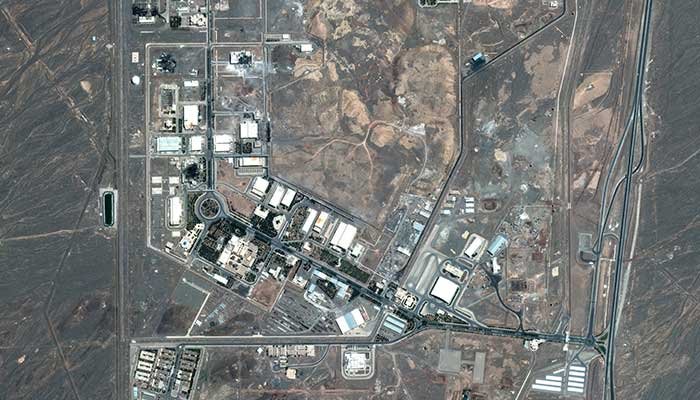Following a series of extensive military strikes by Israel targeting Iranian infrastructure, including key nuclear facilities, significant questions are being raised about the state of Iran’s nuclear program.
Here’s what we know so far, drawing from recent reports, including the UN nuclear watchdog’s quarterly report released on May 31st:
The Core Concern: Uranium Enrichment
Iran’s current enrichment of uranium to 60% purity is a major sticking point. Experts agree this level is a short step away from the 90% purity needed for weapons-grade material. The IAEA, which monitors Iran’s nuclear sites, has expressed “serious concern,” pointing out that no other nation has enriched uranium to this level without ultimately developing atomic weapons. While Western nations emphasize there’s no justifiable civilian reason for this level of enrichment, Iran maintains that its program is for peaceful purposes, citing its right to nuclear technology under the Non-Proliferation Treaty (NPT). Israel, notably not a signatory of the NPT and widely believed to possess nuclear weapons, maintains a policy of neither confirming nor denying its nuclear capabilities.
Targeting Uranium Enrichment: Key Facilities
Before the attacks, Iran had three operational uranium enrichment plants:
The Fuel Enrichment Plant (FEP) at Natanz: This massive underground facility, designed to house a vast number of centrifuges, was reportedly hit. Before the strike, it housed roughly 17,000 centrifuges, with about 13,500 enriching uranium to 5%. IAEA Chief Rafael Grossi informed the UN Security Council that the electrical infrastructure at Natanz suffered significant damage, including the main power supply, emergency power supply, and backup generators. While there’s no confirmed physical strike on the underground hall containing the FEP, Grossi noted the power loss “may have damaged the centrifuges.” The IAEA relies on various sources, including satellite imagery, to monitor the situation.
The Pilot Fuel Enrichment Plant (PFEP) at Natanz: This above-ground facility, smaller and more vulnerable than the FEP, has been destroyed in the Israeli attack, according to Grossi. Previously used for research and development, it housed fewer centrifuges but contained cascades enriching uranium to 60%. Much of the PFEP’s research and development had recently been moved underground to the FEP, where more than 1,000 advanced centrifuges were enriching to up to 5%.
The Fordow Fuel Enrichment Plant: Buried deep within a mountain, the Fordow facility, Grossi confirmed, sustained no visible damage. Although it has around 2,000 centrifuges, Fordow is responsible for the majority of Iran’s 60% enriched uranium production. It achieves this by feeding uranium enriched to 20% into the cascades, as compared to the 5% at the PFEP. In the last quarter, Fordow produced 166.6 kg of uranium enriched to 60%, enough to create almost four nuclear weapons potentially.
Beyond Enrichment: Other Damaged Facilities:
Israeli strikes also damaged four buildings at the Isfahan nuclear complex, including the Uranium Conversion Facility (UCF) and sites involved in uranium metal work. Mastering uranium metal technology is crucial for developing a nuclear weapon’s core. The UCF converts “yellowcake” uranium into uranium hexafluoride, the substance needed for enrichment. If the UCF is disabled, Iran’s uranium enrichment program will eventually stall unless it can source uranium hexafluoride externally.
The Human Cost: Targeted Scientists:
Multiple sources report that at least 14 Iranian nuclear scientists have been killed since the strikes began, some in targeted attacks such as car bombings. The Israeli armed forces have publicly identified nine of these individuals, asserting they were central to Iran’s progress toward developing nuclear weapons, an assertion that remains unverified. Western powers often suggest that while losing experts or facilities may slow the process, Iran’s underlying knowledge base represents an “irreversible knowledge gain.”
The Uranium Stockpile: A Growing Concern
Iran maintains a significant stockpile of uranium enriched to various levels. As of May 17th, the IAEA estimates Iran had enough uranium enriched to 60% for potentially nine nuclear weapons. It also possesses uranium enriched to 20% for two more and uranium enriched to 5% for an additional eleven. The location of much of this highly enriched uranium is reportedly at Isfahan, under IAEA seal, although the IAEA has not confirmed whether this stockpile was affected by the recent strikes.
Key Questions Remain Unanswered:
Iran’s Response: Iran has threatened to take undisclosed measures to protect nuclear materials and may reduce cooperation with the IAEA. Some lawmakers are considering withdrawing from the NPT, like North Korea did in 2003. The IAEA’s lack of information about centrifuges outside known facilities fuels speculation about secret enrichment plants. Also, current centrifuge cascades can quickly be reconfigured to enrich to different purity levels within a week.
The Status of Uranium Stocks: If Iran can no longer convert uranium, its existing stock of uranium hexafluoride and enriched uranium becomes increasingly critical.
Extent of the Damage: The IAEA has yet to conduct detailed inspections to assess the full extent of the damage at the targeted facilities.
Future Attacks? Following the initial attacks, the US President urged Iran to negotiate a new deal with the United States to further restrict its nuclear program, but talks scheduled for June 15th have been canceled.


